18 Superfoods You Should Add to Your Grocery List
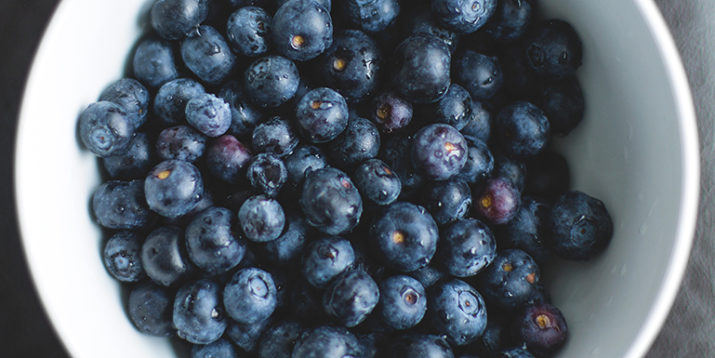
It’s a bird! It’s a plane! It’s… superfoods? Forget the guy in the blue and red outfit (sorry, Superman), it’s superfoods to the rescue.
Packed with vitamins, minerals, healthy fats, and fiber – as well as antioxidants, flavonoids, and phytochemicals – the items on this superfoods list offer a wide variety of benefits.
What Are Superfoods?
Michael Balick, PH.D, ethnobotanist at the New York Botanical Garden, prefers to think of superfoods as “impactful foods” instead, because of how they can help you achieve optimum nutrition.
“Eating foods with high-quality proteins, vitamins, and minerals — such as brightly colored berries that maximize antioxidant activity — is a healthy way to start the day, as well as a great substitute for sugary, processed desserts,” he says.
Many accessible, affordable superfoods may also help your body and your bloodstream absorb more vitamins and minerals from food, ease stress, and help you lose weight.
“The concept of balance is really essential,” Balick says. “I don’t believe that binging on one specific food in the hopes that it will solve all of your problems is a realistic approach to a healthy and happy lifestyle.”
Diversify your diet with these superfoods:
18 Superfoods for Your Grocery List
We rounded up a list of the 18 best superfoods. While some of them might be harder to find, many of them are regularly featured in grocery stores around the country.
So add them to your shopping list, make a superfood salad or a superfood smoothie out of them – they’re sure to make a tasty and nutritious addition to your diet!
1. Blueberries
Packed with phytochemicals, flavonoids, and soluble fiber, choose organic, dark-hued berries; they’re highest in potassium and vitamin C.
Blueberries (strawberries and raspberries contain similar properties) contain properties that may help maintain a healthy heart and cholesterol levels.
This study also points out that further and more extensive studies are needed.
2. Pitaya (Dragon Fruit)
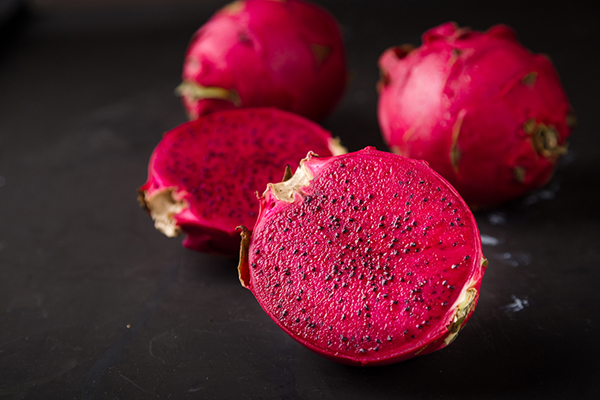
You’ve probably seen this gorgeous superfood fruit all over Instagram. IRL, it’s pretty easy to recognize it by its vibrant fuchsia color and dragon-like spikes.
That bold color means that it’s bursting with phytonutrients, including lycopene. Dragon fruit is also rich in vitamin C, fiber, and magnesium.
One small dragon fruit is only about 60 calories and is perfect in a smoothie or eaten raw.
3. Leafy greens
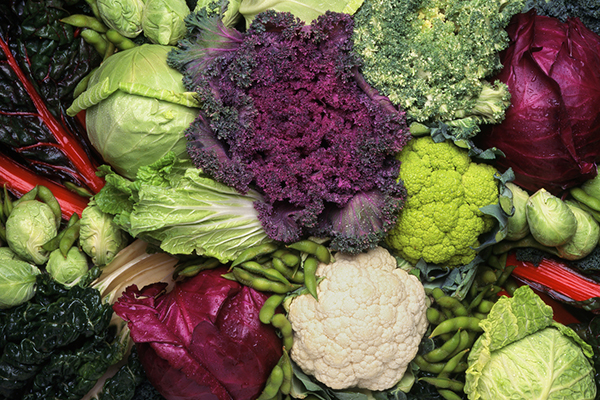
Swiss chard, spinach, collard greens, and other slightly bitter lettuce leaves have an abundance of phytonutrients, and should be consumed daily.
The darkest greens contain fiber and calcium to improve digestion. Leafy greens are high in calcium and folate (vitamin B9), which are good for your bones.
Mix them all together for an impressive green superfood salad!
4. Cruciferous vegetables
While broccoli always gets top billing as the ultimate member of the Brassicaceae family, many other cruciferous vegetables also contain sky-high amounts of calcium, vitamins A, C, K, E, and the B vitamins.
Try Brussels sprouts, kohlrabi, kale, and cauliflower for a cruciferous change-up.
5. Freekeh
Ancient grains like quinoa and farro are all the rage these days. But the next big grain? Freekeh, roasted green wheat with a nutty, chewy texture that originated in Northern Africa and the Middle East.
A cooked half-cup of the whole grain contains 10 grams of fiber and 10 grams of protein.
That’s about six times as much fiber and four times as much protein as the same amount of cooked brown rice.
Toss it into any recipe that would normally contain whole grains, such as pilafs or salads.
The only downside of freekeh is that, unlike quinoa or brown rice, it is wheat, so it should be avoided if you follow a gluten-free diet.
6. Wild-caught salmon (Pacific or Alaska)
The richest, fatty fish like mackerel, bluefish, and wild salmon are vital sources of omega-3 fatty acids, nutrients that can support cardiovascular health.
The American Heart Association recommends getting at least two servings of fatty fish a week.
7. Tiger Nuts

Don’t let the name fool you – tiger nuts are actually tubers.
This small root vegetable was discovered around 4,000 years (making it pretty OG Paleo) and the nut milk made from it is sometimes used to make horchata.
There are approximately 120 calories in fifty tiger nuts, plus 10 grams of fiber and 215 mg of potassium. Grab a handful for a crunchy superfood snack.
8. Legumes
Dried beans, peas, and lentils are excellent sources of vegetarian proteins. In addition, legumes are high-energy foods that increase satiety.
Legumes provide low-fat protein and insoluble fiber as well as potassium, folate, and the B vitamins.
As a side dish in place of bread or potatoes, they can keep you full longer.
9. Whole grains, brown rice, oats, barley, spelt
There are so many edible ancient grains; with a quick stroll down any health food aisle, you can likely find these healthy grains: rye, farro, wild rice, and some forms of sprouted unrefined wheat.
To be a whole grain, the carbohydrate must retain the all-important bran and germ of a kernel, where nutrients live.
Whole grains contain more phytochemicals, antioxidants, vitamin E, magnesium, and iron than their white counterparts.
Try avoiding less healthy packaged grains, like white rice from a box.
10. Baobab
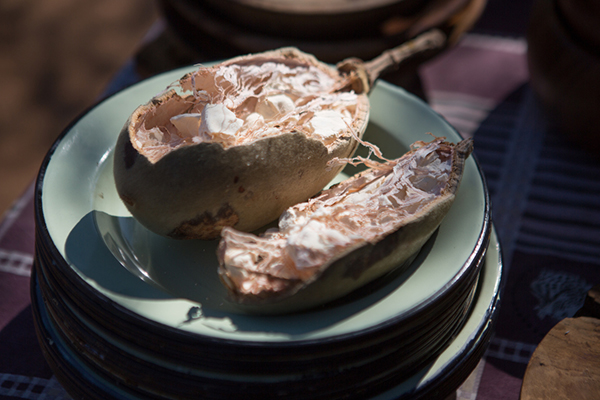
This African super fruit looks like a slender watermelon on the outside, but on the inside, it contains a powdery pulp that has a pear-like flavor that works well in smoothies, juices, and baked goods.
It also contains nearly six times as much vitamin C as oranges and twice as much calcium as milk.
Compared to other superfoods, baobab packs an impressive 10-gram serving has 4.7 grams of fiber.
11. Avocado
This might just be our favorite green superfood. The ultimate powerhouse produce, avocados are jam-packed with potassium, fiber, and healthy monounsaturated fats that protect the heart.
Your future guacamole contains protective nutrients such as oleic acid, lutein, folate, and vitamin E, which can benefit eye health, healthy cholesterol levels, and may even benefit your skin.
12. Moringa (Horseradish Tree)
Moringa — also known as the Horseradish or Drumstick Tree — has edible leaves, seeds, and pods. Depending on the part of the plant, it contains as much calcium as milk, more potassium than a banana, two and a half times the amount of vitamin C as an orange, and each ounce of leaves contains three grams of protein.
13. Turkey Tail Mushroom
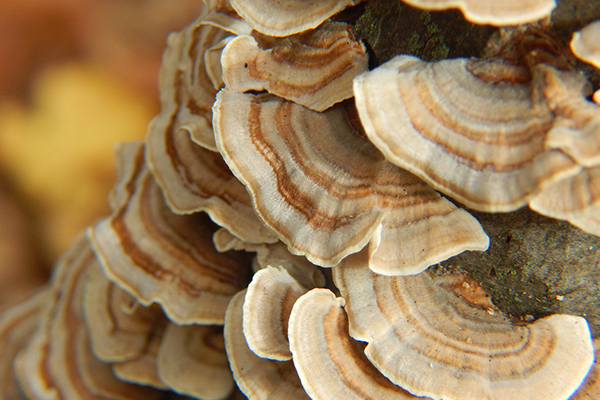
Mushroom powder might not be the first thing you think of to put in a smoothie, but consider making an exception for this super-fungus.
Named for their distinct shape and stripes, turkey tail mushrooms contain polysaccharides that help support a healthy immune system.
If you’re looking for an easy superfood powder to sprinkle into a morning shake, try a scoop of turkey tail mushroom.
14. Hemp Seeds
There’s no doubt that chia seeds are nutrient-dense power seeds and make a darn good pudding, but hemp seeds are proving to be tough competition.
They can help boost your protein intake if you’re following a vegan diet as they contain 10 grams of protein per one ounce (chia seeds contain 4.7 grams).
They also contain all 10 essential amino acids, omega-3 fatty acids, some omega-6 fatty acids, and are rich in magnesium and iron.
Throw them in smoothies, sprinkle them on salads, or make them into pudding.
15. Black Rice
This noir rice, also known as ‘forbidden rice,’ due to its rarity in ancient China is rich in phytonutrients and vitamin E.
It contains a large number of anthocyanins (as do blueberries, those other nutritional powerhouses), which have been shown to lower the risk of heart attacks and control cholesterol levels.
16. Dandelion Greens
 c
c
Yes, this is the same weed that takes over your lawn. But, despite it being a lawn pest, one chopped cup of this bitter green superfood contains your entire daily requirement for vitamin A, and nearly as much vitamin K as kale.
Every part of the plant, from roots to leaves to flowers, can be used in the kitchen.
The roots are used for medicinal purposes, and can also make coffee and tea, the flowers make wine, and the leaves make a good base for a salad.
If they’re too bitter for you, soften the flavor by blanching the leaves or tossing them with lemon juice.
17. Matcha
This powdered version of green tea is enjoying the spotlight in lattes, cakes, and even energy balls.
The slightly bitter flavor balances out the sweetness in recipes, and it contains 137 times the amount of EGCG found in regular green tea.
And unlike the turkey tail mushroom, matcha is a slightly more common superfood powder that’s popping up in stores everywhere.
18. Dark chocolate
You read that right — dark chocolate is a superfood!
A one-ounce serving of high-quality, dairy-free dark chocolate is made of 70 percent cocoa, which is one of the richest sources of flavonoids.
Eat a morsel or two several times a week to promote blood circulation. This type of dark chocolate in moderation may help to reduce LDL (bad) cholesterol.
